How many Amish live in North America?
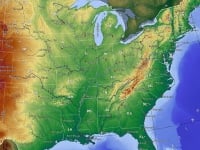
How big is the Amish population?
As of 2011, the total Amish population is 261,150, according to the latest estimates by the Young Center for Anabaptist and Pietist Studies at Elizabethtown College.
No new states made the list this year. So the total Amish tally remains at 28 states (and Ontario). I guess we’ll have to wait another year for that Hawaii Amish entry.
It makes me wonder, though: which states are most likely to join next year’s list?
I’ll take a stab at it and say North Dakota and Alabama.
Why those two?
North Dakota–Amish have a history of settling here, and had a presence for a good while in the early 20th century. North Dakota’s economy is booming, thanks to heavy development of natural energy resources (i.e.,oil). Still, it’s fairly remote, and I’d imagine a conservative Amish group might make a nice home here (Dakota buddy South Dakota saw its first Amish arrive last year).
Alabama–Another state which Amish once lived in long ago. I could see families from the Ethridge, Tennessee Amish community starting a daughter settlement in the Yellowhammer State (great nickname, by the way). Land is cheap. Conservative Amish similar to the Ethridge group already live in next-door Mississippi. “Alabama Amish” even rolls nicely off the tongue. Let’s make it happen guys.
Agree? Disagree? Any other candidates?


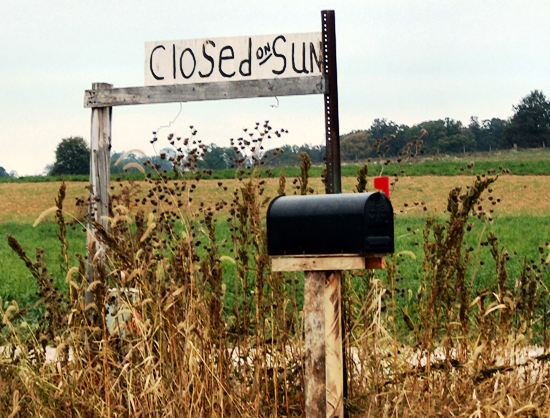
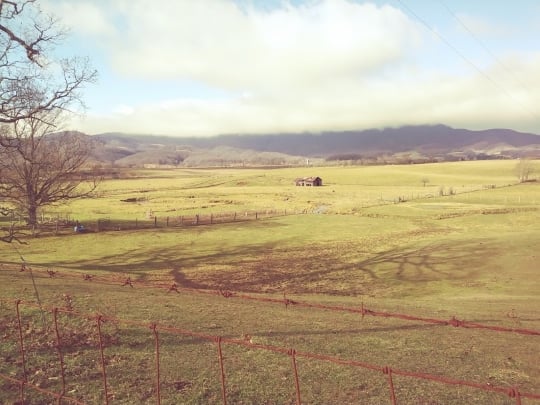
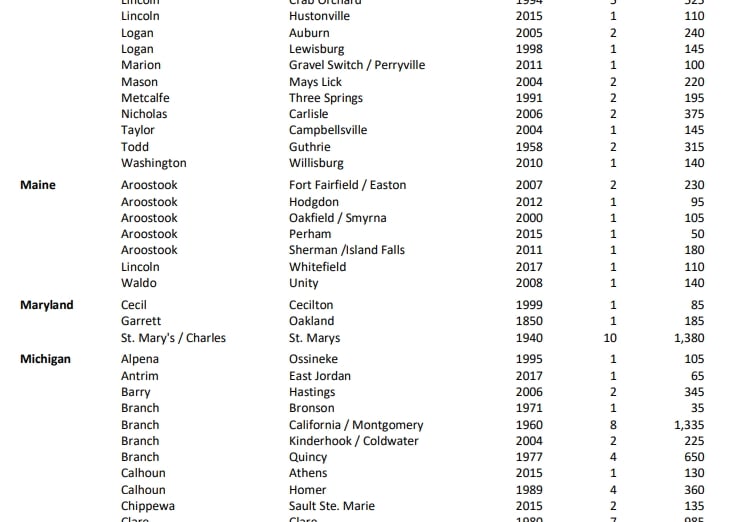
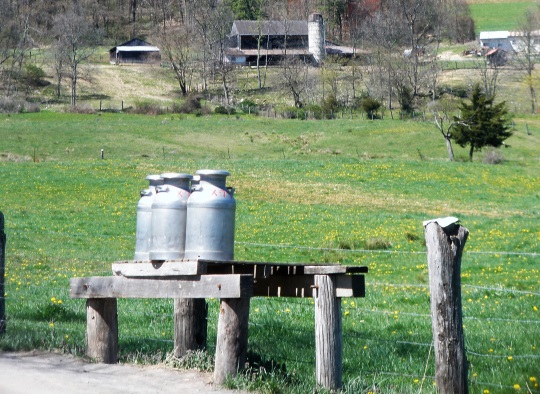
I do not think it would be North Dakota. We were recently stationed at Minot AFB, ND for 5 years (and loved it), it is a hard winter for people and cars alone. The winter sees an average of 5 feet of snow and when it snows in November, it does not melt until April/May. The temperatures in the winter range from -10 to -60 degrees with wind chill factor (when we lived in Florida they called that almost a hurricane, in North Dakota they call it a little breeze). You have to plug in your car in the winter, to keep your engine block from freezing over. The winter would just be to hard on anyone with out cars and heaters……and the summer growing season is very short June through early September (but temps do get to 100+ degrees in summer).
A few years back, we were visiting Ohio/Pennsylvania and the Amish we met were excited at us visiting from so far away. A few of the older men told us, they probably never settle there, because of the winters, but you never know……
Have a wonderful day.
Amish in North Dakota
Theresa, sounds rough. Reading past accounts of Amish in North Dakota, you come across similar stories of crushing winters. Intestinal fortitude I think is what they call it 🙂
When I think North Dakota the first thing that comes to mind is the Badlands. But North Dakota apparently has much fertile land as well.
I don’t know which crops would be best suited to North Dakota’s shorter growing season. Of course potential Amish settlers to North Dakota may take a cue from the Amish who’ve moved to Colorado, many of whom have focused on non-agricultural business.
GAMEO has more on North Dakota’s historic Amish settlements. They were mostly gone by mid-20th century: http://www.gameo.org/encyclopedia/contents/N677185.html
Hi Erik;
The crops that were grown in the summers while we were living there consisted of; flax, canola, 90-day corn and lots of sunflowers.
Have a great day.
I would love to see the Amish move to AZ. There is fertile land in southern AZ with orchards and farms. Northern AZ. would fit them perfectly with the cold weather and snow in the winter. The mountains and the land would be perfect for their farms and cattle.
The Amish lived here years ago, but left. If they lived down by Safford, or Sierra Vista or up north in Flagstaff they would do fine.
We call those "flurries"
I invite you to visit upstate NY in January or February. We call 5 feet of snow “flurries” up here. Don’t worry if you can’t make it until spring. A few years ago we had our worst blizzard of the season in April.
We have Amish here. I heard buggies go past my house twice earlier this morning. But it’s not the weather that makes it hard for the Old Order Amish. Settlers came to this area 200 years ago living under worse conditions than the Amish do now. They have other problems besides the weather.
Robin
Robin, I grew up in NY state, and I have also been to ND several times. I was merely making a comparison on the weather as both can be severe. Naturally there are many other problems facing the Amish besides the weather.
Blessings, Alice
Upstate NY
I can’t argue that North Dakota has tough winters but more important, what are the state building codes like? And how do people treat newcomers?
People were living in North Dakota before cars. The plains indians are one example.
I love that old saying ” follow the money”, and i believe the Amish will go where the land is reasonable and the soil is suited for farming. I’m reading that the state of New York has a growing Amish population, and its in a newspaper article today as well. New York has pretty high taxes and has a reputation at least in the south and middle part of the state as being pricey for homes and land, but the finger lake region is growing slowly with Amish/Mennonites. Richard http://www.Amishstorys.com
Greetings!!
I think both are pretty much as good a guess as any. I have been to North Dakota and they could be involved with agriculture as well as the big oil boom. Winters are harsh but really not much worse than the upper NY state Amish go through. Alabama’s climate is good for agriculture as well. Of the two I personally would prefer ND, but I like cooler weather, LOL.
Blessings, Alice
Alice, I’d like to see an Amish oilman. I doubt they’d ever go in for spurs and ten-gallon hats though 🙂
Erik 10 gallon hats and spurs???
Erik, 10 gallon hats and spurs, might happen in Texas or in movies but you won’t see that much in ND, LOL. Besides, the booming oil industry opens the door to many other industries in the state. Many of which the Amish would be well suited to. For example, a bulk foods store much like Beachy’s in Arthur would fair well in ND. Furniture and cabinets for the folks moving into the area that will be working the oil fields would fair well also. And of course agricultural. Grains, beets and other cool weather crops bring big money to ND. The oil field workers moving into the area will have many needs that the Amish could easily provide. That is what I meant by the booming oil business. 🙂
Blessings, Alice
Well said Alice. I hear “oilman” and the Texas caricature instantly pops into my head:)
But you make a good point, the rising tide of the rocking oil industry will raise all boats. I read recently that what are your “minimum wage” jobs in other states are paying high hourly premiums in North Dakota.
Housing and land prices are climbing as well so if anyone is going to make a move to ND they should do it soon. There is an oil reserve in ND that would put the middle east to shame, LOL.
The folks from Lobelville are looking seriously into buying land and settling in Alabama. While they are not officially “Amish,” (who defines that, anyways 🙂 ) they are horse and buggy. Well, they do have a community van that they use for long distance travel. Sort of a hybrid. 🙂
But they look and act and believe similar enough to Amish that most people would class them as Amish. And most of them are from Amish/Mennonite background.
With the spike in corn prices (due to 40% of the crop going to ethanol production now), farmland prices are spiking also. Good corn-growing land has doubled or tripled in the last 10 years, according to a news report I was reading just the other day. That will push new settlements to areas sort of marginal for farming.
Guyana almost had a settlement, from Pearisburg, Virginia. Last I heard, of the 3 families that went down, 2 had come back after some months there. That was a year or so ago, so I dont know if the lone family is hanging in there still or not.
Mike
Interesting Mike. From what I hear Pearisburg VA is not your typical settlement either, though still considered in the Amish fold. I guess the majority defines the fringe 😉
Alabama I Hope!
I live in Alabama and I truly admire the Amish. I would LOVE to see them establish communities here! I love Amish foods and crafts but since we don’t have any Amish communities here (yet!), those kinds of things are hard to come by. I hope they do start building communities here!
North Dakota has prime farmland~German is the #2 language spoken there. I grew up in the Fargo-Moorhead area and we grew an extensive garden~had fruit trees~canned everything~as did my Norwegian and German ancestors that settled there. They called it “God’s Country”~most people think of harsh winters~they settled where land was rich and plentiful and climate was similar to “home”. I think the Amish can thrive in ND~generations of Germans/Black Sea Germans from Russia before them did. It’s less culturally diverse than the rest of the US. Personally, I think it’s a great place to raise a family and the Amish would be a welcome addition to the population. Also, depends on whether they are looking at the eastern or western part of the state. Western is more oil/ranching driven with agriculture in the East.
German in North Dakota
Bonne, you’ve piqued my curiosity…how widespread is German in North Dakota? Would some use at home, just older generations still speak it, or..?
German in North Dakota
Erik, I’m not sure what the particulars are as to how widespread speaking German at home is anymore. My Ex did a college paper on the German settlement of ND by county and it was astounding how many counties at that time (this was late 80’s) had a majority of bilingual (English & German) speakers. My interest is piqued as well~I’ll ask him next time I see him what he remembers of that study.
Interesting article: http://library.ndsu.edu/grhc/history_culture/history/iseminger.html
Linquistic communities: http://www.muturzikin.com/cartesusa/deutschemundarten.htm
German in North Dakota
Hutterites speak a German dialect in North Dakota.
Amish in Canada
There had been an attempt at an Amish settlement here in New Brunswick a while ago, but I was told that the immigration issues were the major reason they pulled out. Ontario Amish would not like our sub-arctic climate. They are farther south and have a longer growing season. But the farmland is cheap. Potatoes, beans, and grain/hay grow well here. My own contact with Immigration Canada has been positive, and I think some advance work could be done to facilitate American-born Amish to settle here. Home-schooling and faith-based schools are common enough here, and easy to establish. We also have an extensive trail system that was the railroad right-of-way. The tracks are mostly gone, and the trail was converted to recreational use, but with the cost of fuel these days, few ATVs or snowmobiles use it, and I would guess the province would be happy if horse traffic came in to help maintain and support it. I would expect a small yearly fee for horse-drawn vehicles would be welcomed. We have New Order Mennonites nearby, who use cars and tractors, so Plain communities already exist.
Amish in Canada outside Ontario
Magdalena you’ve got to send this promo in a letter to the Budget 🙂 I’ve always thought it would be interesting to see Amish in Canada outside of Ontario. There was at least one attempt to settle in British Columbia a few years back.
i just read an article in our local paper and it said that Lancaster, Pennsylvania has the most Amish people in them. Im glad because it is close enough for us to go to.
I guess Vermont. When I lived there for thirty years, I always thought Vermont and the Amish belonged together. There were many family farms growing nothing but new housing developments for many years, but now that has slowed. So many barns are collapsing from not be used or maintained as the family farms are no longer being farmed. Vermonters would be very welcoming, I believe. In fact, a friend of ours was trying to attract Amish to settle into an area they were trying to preserve as agricultural land.
There is a huge market for homegrown veggies and berries, there are apple orchards, and they would have many clients who would hire them for building, carpentry, etc. Handcrafts are also popular.
Back in 1976, there were two families living in Shoreham, Vermont. They were growing vegetables. The owner of the farm they were on wanted them to buy or move out after renting the farm for a year. They decided to move out, because the summer had been dry and they didn’t want to buy just yet. One family moved back to the Big Valley in PA, the other to upstate NY.
I don’t have a second guess. I would say the rich farmland here in the Pioneer Valley of Massachusetts would be an Amish dream and the parts that are zoned agricultural are not that expensive, but culturally I don’t think it would work.
Amish in Massachusetts, Vermont
Saloma I’ve wondered how land in places like Vermont and New Hampshire and other parts of New England compares to land in say parts of Maine where Amish have settled or upstate New York.
I’ve always assumed that Massachusetts or Connecticut would be very pricey and would guess that’d rule out Amish going to those states. But as you say sounds like some Massachusetts land is not that expensive.
You have also piqued my curiosity as to why Massachusetts might not be a good fit for Amish culturally. I’ve only visited once, Worcester and Boston, so don’t know what MA small town/rural life is like.
Rural life in MA
I live in a tiny town called Holland, MA. Look it up on google earth and that will give you an idea of what rural life in MA is like.
Haven’t given this topic much thought but I see your logic. I think Hawaii would be a stretch, but you never know! 🙂
I think North Dakota is a good choice as to a “new” state to
where Amish people may develop a settlement. As it says in the
Minnesota State Amish guide, there are now Amish communities in
Polk County, Minn., Fertile and Fosston, and they are only about
25 and 50 miles from N. D., respectively. I don’t think the weather
in eastern N.D. would be that much different than at Fertile,Mn.
Another factor that might attract some Amish is the train service. Amtrack has regular train service in N.D. with seven stops in N. D. and I know that many Amish people use train travel.
MA & CT have pockets of very productive farmland. But because it’s so scattered you would have difficulty finding enough land up for sale within a short enough time frame to reach critical mass for horse & buggy church districts.
If you’re interested in looking at satellite photos on Google Maps, the Connecticut River Valley, particularly in the Hadley, MA area comes to mind, as near me — parts of Pomfret and especially Woodstock, CT on up into Dudley and Charlton, MA come to mind. You’ll notice on the whole though most farms tend to be alone or in small clusters.
Where land is good, we have very productive farmland. The soils of the Connecticut River Valley are benchmark to judge other soils by, sort of like West Texas Intermediate oil. (There’s specialty tobacco farms in that area that can grow $30,000/acre of tobacco). In the hills, the glacial till is a good balance between drainage and holding water and we don’t see the severity of droughts you get into in the south.
Expense is an issue. Premier farmland, not in agricultural preservation programs, and not in flood plains commonly sell for $20-$30K/acre. A lot of that is the development value (retirement plan for the farmers). Some of that is the quality of the land for farming, so even land that’s in one of the State, Town, or Non-profit protection programs you’ll tend to have a fairly high ag value for rent or sales.
NOW, that said — my assumptions on land needs is based on the more extensive agriculture I usually see written about the Amish (and my limited visits to Lancaster).
If you google Elliot Coleman, he’s developed a pretty effective year-round vegetable farm in Maine. It would seem to me Coleman’s intensive, year-round farming would suit the Amish desire for community well — no worse and probably better then working in the RV industry! Much less land could support many more families, particularly if they bought at least some of their oats and straw for horses. (There would probably be enough hill slopes for pasture and hay fields adjacent to intensely farmed vegetable areas to meet those needs).
I’m quite sure you have or would rapidly develop the market to absorb such produce in this part of New England. (One of the current paradoxes is the organic/sustainable/locavore movements tend to be centered in areas not friendly to family farms like the deeply blue parts of the coast, while areas with low costs of farm production don’t tend to place as much value on where and how their food is produced).
Even with premium markets, it’s real tough for a *conventional* American family to earn an income to maintain the living standards most of us have with intensive, local farms. However, the Amish have lower cash needs right across the board and I believe would live quite comfortably.
I think the intensive farming like Coleman practices offers a viable option from what I understand of Amish beliefs, to keep communities going near urbanizing areas by not worrying about how many acres you need for a farm but how intensively a few acres can be farmed. Whether they’d WANT to be in that close proximity to large populations, make the capital investment (which is modest but riskier then just buying land), and be willing to learn how to grow vegetables for premium markets (we’re a bit different here from traditional “plant when an oak leaf is the size of a mouse ear” practices I think are all open questions.
As a Mennonite pastor in Birmingham, I’d welcome the Amish to Alabama with open arms!
Migration and weather
A year, two maybe three years ago I heard that some Mennonites were migrating from Ontario to Manitoba, but I’m not sure how that turned out, and I don’t know how much of Ontario’s Amish community considered going with them. I don’t know how well the farmers in those groups are doing here in southern Ontario, the province has had a large lack of rain lately, it makes TV Weathermen and women happy when they can report nice summer weather for people who want to bum around and lounge and vacation, but it makes farmers of any religion sad and horrified for their crops and livelihoods.
How many amish in AMerica
I am curious has anyone known an Amishman(or woman) to have been to Hawaii? They do travel, some extensively. But Hawaii is a reach!
Amish in Hawaii
In all seriousness, Hawaii is probably about the last place in America I’d expect to see Amish–well Hawaii and Washington DC 🙂
Patty I wouldn’t be surprised if someone from one of the Amish groups that permit flying has been to Hawaii. Some Amish travel very long distances, ie to Europe but usually by ship.
New Order Amish typically permit flying so it’s possible someone with the financial means just had to take a vacation there. Or maybe some of these folks are even more ambitious than I’m giving them credit for and have considered resettling there…but I’ve never heard of any Hawaii Amish scouting trips 🙂 You’d need some cash to make it happen, Hawaii I hear is not cheap!
Lobelville?
Primitive Christianity,
Can you tell me some more about the folks from Lobelville? (Lobelville where?) If they aren’t Amish, what are they?
About Lobelville
Lobelville is in Tennessee. The people there are a Plain group with a stronger than normal (for Amish) emphasis on a definite new birth experience. While they do not have personal motorized vehicles, they do have a church van with a couple of the men having a drivers license, so that they do not have to hire a driver for long distance trips. Locally, they use buggies and bikes. They would use English for church services. In many ways, they are “Amish,” but these couple of things would set them outside of mainstream “Amish.” Most of them come from Amish and Mennonite backgrounds, although there are an ex-Baptist or two mixed in there. email me at atnips at gmail com if you want more info.
Lobelville, Tennessee "Amish"
Matthew Mike can probably tell you more but I believe he is referring to the Lobelville, Tennessee community, a group that has/has had members with Amish and other plain roots as well as non-Plain people. For a few reasons they are considered unorthodox and outside the Old Order fold. There have been a number of groups like this that blend Amish beliefs and traditions with non-traditional ones.
I don’t know how things stand at present but for one example the Lobelville group has permitted use of cars along with the horse and buggy. In these types of groups belief and theology may deviate from what is considered the norm with Amish as well. Usually the differences in belief or practice prevents them from fellowshipping with Old Order Amish groups thus they remain somewhat outside the fold.
As it happens I have a section on these types of groups in my upcoming book; the best scholarly paper on them is by G.C. Waldrep, “The New Order Amish and Para-Amish Groups: Spiritual Renewal Within a Tradition”, in the July 2008 Mennonite Quarterly Review.
Whoops, sorry Mike, did not see you had posted already as I began my own. Thanks for clarifying the car info; what I read said that at one time some members drove cars, but looks like that practice is pretty restricted at present.
not quite sure where the next new state will be, but we have a new amish settlement here in central ny…from the punxatawney, pa area. it’s nice having new neighbors, but a big learning experience for us. why they chose this area, i’m not quite sure, but it’s nice seeing all this abandoned farmland being put to use. my only complaint is they’re paying pa land prices here in ny! and that is jacking up our assessments… but we’ve gotten some very good friends too 🙂
Greater Marathon, NY has 30 Amish Families
As of December 1, 2011 the Greater Marathon, NY area has 30 Amish families. Many are extended families who hail mostly from Smicksburg, PA.
Several are dairy farmers and moved here because they have a market for their milk through the Dairylea Cooperative.
Two men who are not engaged in dairy farming for themselves work for local dairy farmers. One of them is a very good tractor driver.
Others make a living building cabinets, backyard storage sheds, outside and inside carpentry. One genthemen does a great job cutting up deer during the hunting season.
Many of the ladies sell baked goods from home and on Saturdays in front of the Dollar Store in Marathon, NY.
There are three school buildings. Two in the Town of Lapeer and one in the Town of Freetown.
There has been a problem with school bus transportation recently.
Last year the Marathon School District provided separate transportation for Amish children. This was rescinded as of the start of the 2011-2012 school year.
http://www.marathonschools.org/Board_of_Education.html
A few weeks ago a local auctioneer held a benefit auction for the Amish Schools. It was well attended and one of the Amish farmers did some of the auctioneering. He did an excellent job. I asked if he had gone to auctioneering school. He had not but had taught himself inside a silo. A good place to practice.
The community has a bishop, two preachers and a deacon.
The Amish have added an attractive flavor to the area.
Local NY Amish update
Thank you for the interesting local update George. I was amused to hear of the auctioneer silo practice. Makes sense though if you’d like a relatively private place! Also the comment about one gentleman being a very good tractor driver…
Orville AL
There is a Beachy-Amish settlement in Central Alabama in Dallas Co., but I suppose that would not count in this tally?
Beachy Amish in population statistics?
JonLuke, sorry for the slow response, you are right, this total is only Old Order Amish–which is horse and buggy. Beachy Amish wouldn’t be included.
This figure would include both the “standard” Old Order and the many other varieties of horse and buggy Amish–Swartzentruber, Nebraska, and even, despite the name, New Order Amish, who also use the horse and buggy and are quite alike culturally.
African American
Are there any African American Amish populations? Or members?
A few Amish have adopted African-American children.
Amish in ND
ND winters are not so bad that the Amish could not take it. For one thing, how bad the winter is depends on what part of the state you live in. If you live around some of the more northern cities like Minot or Grand Forks, you will most likely experience a harsher winter, but if you live in the central, southern or west, you will most likely experience something a bit milder. I spent most of my life living in Bismarck, ND. The growing season is usually May through Sept and the coldest month of the year, which is January, sees an average high of 23 above and an average low of 2 above. At worst you may see actual temps that drop to 30 or 40 below at times, but that is by no means the norm. If the Amish were to settle anywhere in the south central or south western part of the state, they would experience winters that are certainly no worse than the winters experienced by the Amish who live central and southern Minnesota. It also just so happens that that part of ND is also where you are most likely to find German speaking people.
ND v. MN
I live in Fargo ND which borders Moorhead MN. There is an Amish community about an hour and a half – 2 hours from Fargo. That being said, the weather does not differ a whole lot from here to there. The Amish survived ND years and years ago. Since then, thanks to global warming, our winters have gotten quite a bit more mild over the years. December 25, 2011, we had a brown Christmas – not a speck of snow to be seen and the weather was unusually warm.
Hello, from Sydney, Australia,
As I understand matters about a decade ago five Amish men flew to Sydney, NSW, and then on to Tasmania because they were considering a move by their entire community to Tasmania. The then Premier of Tasmania, Jim Bacon, found out and asked if I could find out where they had come from as he was interested in offering them the ability to become business migrants to Tasmania, Australia. I could never find out from where they had come. I was interested as they would have made very good agricultural people in Tasmania. I was asked to find this out because my area of study is religion and theology; and he thought I may have the contacts to find out.
Andrew D’A. E. Bush
Are you sure you are not mistaking them for the Hutterites at Rocky Cape Christian Community?
3-11-14.
Thanks for your comment, Mike. Yes, I am sure. I was able to obtain some information about the men who cane to Australia to assess the productivity potential of land in country Tasmania and I am quite sure, really very sure, that the men who visited us here in Australia and went to Tasmania were Amish; all from the one Amish community which had seemingly decided to seriously consider relocating their entire community. Many of us people of Australia, both in Tasmania and elsewhere, would have welcomed them, as they are very decent, hard-working people, and the Tasmanian community would have benefited. At the time I did suggest they may have to learn to take their buggies on the opposite side of the road; but we did want them to settle here.
Andrew D’A. E. Bush.
How many Amish live in North America
I live in Northeast Alabama and we have had Several families move here the last 2 to 3 yrs. They are wonderful people and God fearing, something we are lacking in America today. They have the best work ethic i have witnessed. The Hispanics are also hard workers. I visited their produce store today and purchased several produce items from them. We are thrilled to have them in our community. Praying more will locate here in Scottsboro, Al. Area.